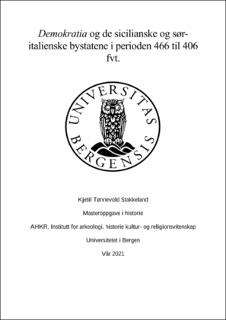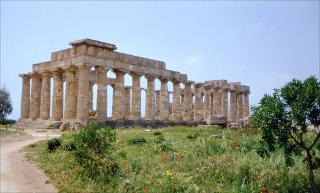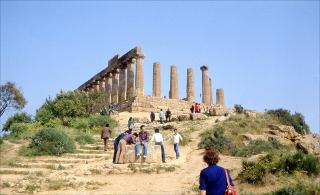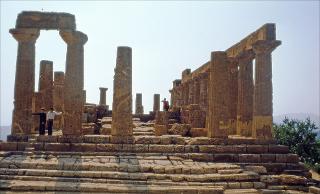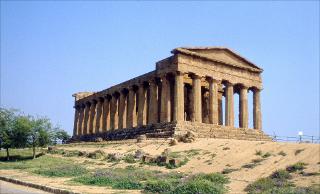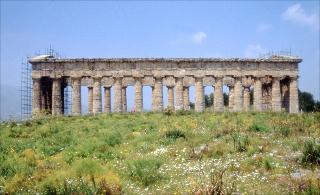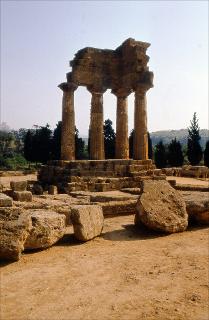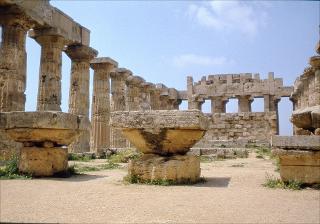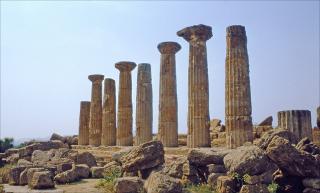| dc.description.abstract | Abstract The subject of this paper is the political structure of Sicilian and South-Italian (Magna Graecia) poleis from 466 to 406 BCE. In 1968 Moses I. Finley launched the hypothesis of a «democratic interlude» in Sicily. This hypothesis and the associated claim that different poleis in Sicily and South-Italy became democratic after a tyrannical era has been heavily debated by historians, particularly the political structure in Syracuse from 466 to 406 BCE and Akragas from 472 to 406 BCE. Various interpretations of the source material exist, and two main perspectives can be identified. One school of thought agrees with Finley by regarding multiple poleis as democratic. The other takes a more sceptical approach and includes those who argue that a democratic form of government is difficult to verify through the source material. However, some historians within the second school of thought agree that Syracuse was an exception, and that this polis can be described as democratic during the period spanning 412 to 406 BCE, despite the source material being limited. I argue that Thucydides, Aristotle and Diodorus Siculus gave too narrow an account of the underlining political structure in different Sicilian and South-Italian poleis. Using the comparative method and constructed different multivariable tables I demonstrate how the three authors used demokratia and oligarkhia to categorise different poleis in Greece around the Aegean Sea, as well as various poleis in Sicily and South-Italy. The general investigation of how the authors classified different poleis in Greece and around the Aegean Sea as well as my investigation of how they used demokratia generally in their work has helped interpret their use of this term regarding different Sicilian and South-Italian poleis. My findings demonstrate that the source materials regarding Syracuse, Akragas (the two poleis on Sicily that we today have the most knowledge of), Gela, Himera, Kamarina, Katane, Leontinoi, Messana/Zankle, Naxos, Selinous, Kroton, Lokroi, Metapontion, Rhegion, Taras and Thourioi are too limited to classify them as democratic. The source material demonstrated that Syracuse, Akragas, and the other poleis in Sicily and South-Italy may have had a form of majority rule where decisions were made by a popular assembly (ekklesiasterion). The sources maintained a direct link between popular assemblies and democracies, but this is not necessarily enough to demonstrate that these city-states actually were democratic. «The people» who could attend the popular assembly were not made evident in the sources and they fail to illustrate how both the «poor» and the «rich» had direct control over the political institutions. An additional point is that the absence of tyranny, a point Diodorus seemed to focus on, is not the same as the presence of democracy. The claim made by Finley and his hypothesis regarding the «democratic interlude» is problematic and has rightly been contested by several historians. However, in my opinion the republican form of government is a more fitting classification of the societies in Sicily and South-Italy. The term opens for the possibility that these societies could have had different democratic and oligarchic practices within their political systems, without defining them as either democratic or oligarchic. Thucydides, Aristotle and Diodorus provide some of the most thorough descriptions of the political structure in different Sicilian and South-Italian societies. There are however some issues regarding these sources. Thucydides and Aristotle never visited Sicily nor South-Italy. Their historical accuracy may therefore be questioned. Moreover, Thucydides` characterisations and his use of speeches to describe the political landscape in Syracuse and other Sicilian poleis are problematic. We can not definitively prove that his narrative is not the product of his own imagination or misinformation, or at the very least influenced by it. Another issue is the meaning behind his comparison of unspecified societies in Sicily (with the exclusion of Syracuse) with Athens` political and military structure. Similar challenges can be found in Aristotle`s categorisations. He defined Syracuse`s governmental form twice, both as a «democracy» and «politeia» from 466 to 415 BCE. Politeia is a term Aristoteles used to classify societies that had a mixture of democratic and oligarchic practices. He later stated that Syracuse, after their victory over Athens in 413 BCE, changed its existing constitutional government politeia into a democracy. These discrepancies, in terms of governmental forms and what politeia indicates have led to different interpretations within the historical community. Diodorus` descriptions are also flawed. He wrote during the Hellenistic era and this could have affected his narrative and his political characterisations. My inquiry into how the authors used the term demokratia and how the Classical and Hellenistic authors may have differed, occupies a large portion of my thesis. By using the comparative method, I have discovered that Diodorus shared many similarities with Thucydides and Aristotle, but that he differed on two essential points. On the one hand he used demokratia to categorise non-Greek societies, whilst on the other hand he used demokratia to pigeonhole societies that revolted against existing tyrannies in a greater degree than Thucydides and Aristotle did. In his evaluation of Sicilian societies, he focused on the fact that these poleis became democratic after their revolt against oppressive tyrannies and this form of characterisation is problematic. | |
